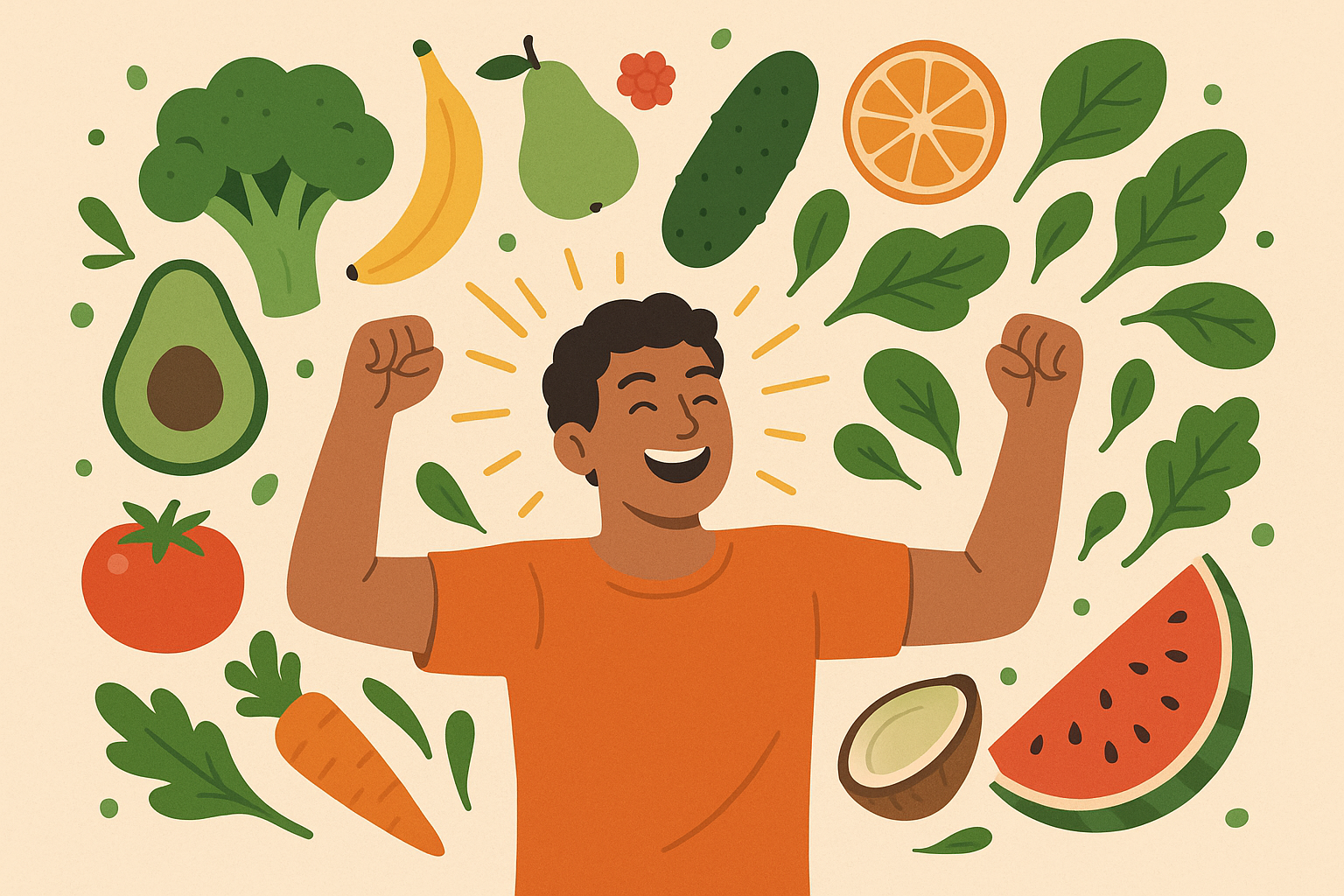Raw Diet Meal Plan Secrets: Why Most People Get Enzyme Timing Completely Wrong
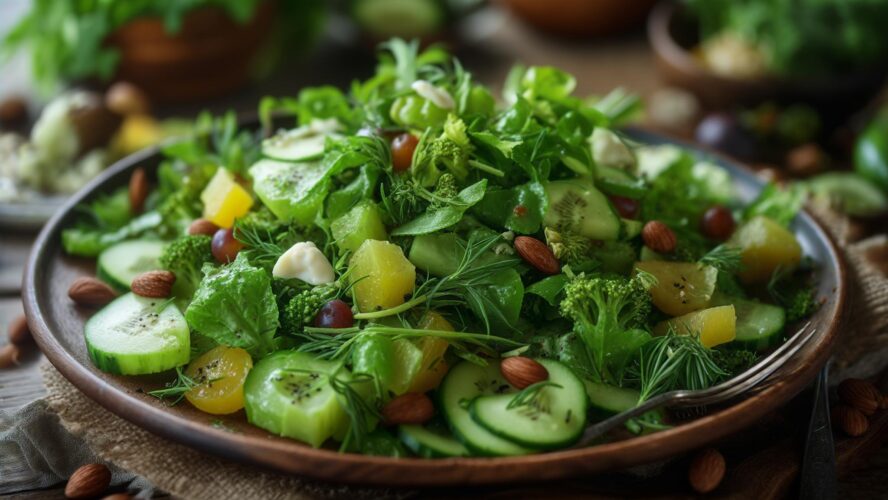
I used to spend $200 a week on organic produce, follow every raw food blog religiously, and still feel like garbage by 3 PM. Sound familiar?
Most raw diet meal plans focus on what foods to eat instead of understanding the critical timing that makes enzymes actually work in your body. According to research from Listonic’s comprehensive raw food analysis, a typical 7-day raw food meal plan provides approximately 1,650 calories daily with 72g fat, 225g carbs, and 42g protein – but these numbers mean nothing if your enzyme timing destroys nutrient absorption before your body can use them.
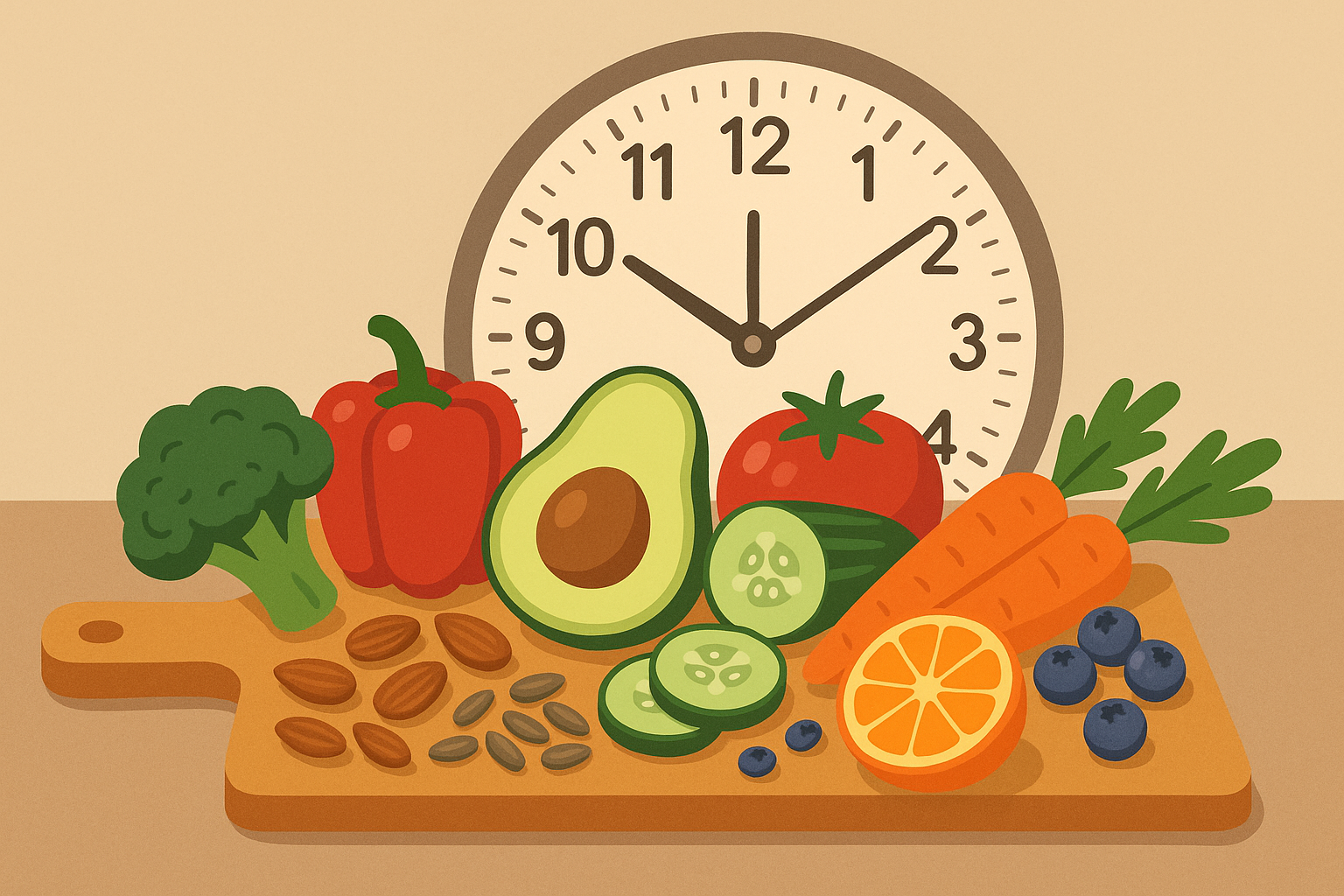
Table of Contents
- What I Wish Someone Had Told Me About Raw Food Timing
- Eating With Your Body’s Natural Clock (It’s Easier Than You Think)
- Why Your Winter Raw Food Plan Should Look Nothing Like Summer
- Keeping Your Gut Happy Through Smart Raw Food Choices
- Raw Vegan vs. Raw Vegetarian: The Differences Nobody Talks About
- Final Thoughts
TL;DR
- Your raw diet success depends more on when you eat things than what you eat – I was prepping my meals at completely wrong times for months
- Eating raw foods without considering your body’s natural rhythm is like swimming upstream – there are actually windows when your body wants different foods
- What works in summer will leave you freezing and exhausted in winter – your raw food strategy needs to change with the seasons
- Your gut needs specific raw foods in the right order to thrive, not just random expensive supplements
- Raw vegan and raw vegetarian approaches require totally different strategies, and most people don’t realize this
What I Wish Someone Had Told Me About Raw Food Timing
I spent months wondering why my carefully planned raw food meals left me feeling sluggish instead of energized. The problem wasn’t what I was eating – it was when and how I was preparing these raw foods. Most raw diet meal plans treat raw food like it’s the same whether you eat it now or three hours from now, but that’s not how it works.
Think of raw foods like sleeping batteries – they need to be “turned on” at the right time to actually work for you. Getting this timing right means the difference between feeling amazing and basically eating expensive roughage.
Why Your Timing Is Probably All Wrong (Mine Was)
Your nuts, seeds, and vegetables need specific prep time to unlock what makes them actually useful to your body. This isn’t about soaking everything overnight because some blog told you to – it’s about understanding when different foods actually start working.
Raw foods start losing their good stuff the moment they’re harvested or chopped. Most of us unknowingly kill these benefits through bad storage and timing, essentially turning our raw food diet into an expensive cooked food diet without the cooking.
I used to grab raw almonds straight from the jar and wonder why they sat in my stomach like rocks. Then I discovered that soaking nuts and seeds 2-8 hours before eating them helps your body actually digest those healthy fats instead of just passing them through your system. Who knew?
The Simple Timing Trick That Changes Everything
Understanding proper timing becomes even more crucial when you consider how to beat bloat and improve digestion through strategic raw food preparation methods.
Chop your vegetables 15-30 minutes before eating, not hours ahead. This wakes up the good compounds without giving them time to break down. Your kale salad should be prepped right before you eat it, not meal-prepped on Sunday for the whole week. I learned this the hard way after basically eating cardboard by Wednesday.
Pull your fermented raw foods out of the fridge 30 minutes before serving. Cold temperatures put them to sleep, so that raw sauerkraut straight from the refrigerator isn’t doing you nearly as many favors as you think. I started pulling my fermented foods out before I even began making the rest of my meal.
My friend Sarah stopped chopping all her veggies on Sunday and started prepping them fresh. She swears it helped her energy levels, though honestly, it might just be that she’s paying more attention to what she eats now. Either way, she feels better.
How to Stop Killing Your Food Before You Eat It
Store your good raw foods in glass containers with minimal air. Plastic containers and too much air kill the beneficial stuff faster than you’d expect. I switched to glass mason jars for everything and noticed the difference within days.
Use vacuum-sealing for any prepared raw meals lasting more than 24 hours. This isn’t being obsessive – it’s keeping your food actually useful. Your Sunday meal prep needs to account for keeping things alive, not just convenient.
Add raw apple cider vinegar to your salad dressings. It helps preserve the good stuff in other raw foods when mixed together. I add a tablespoon to my dressings now, and my prepared raw meals stay fresh much longer.
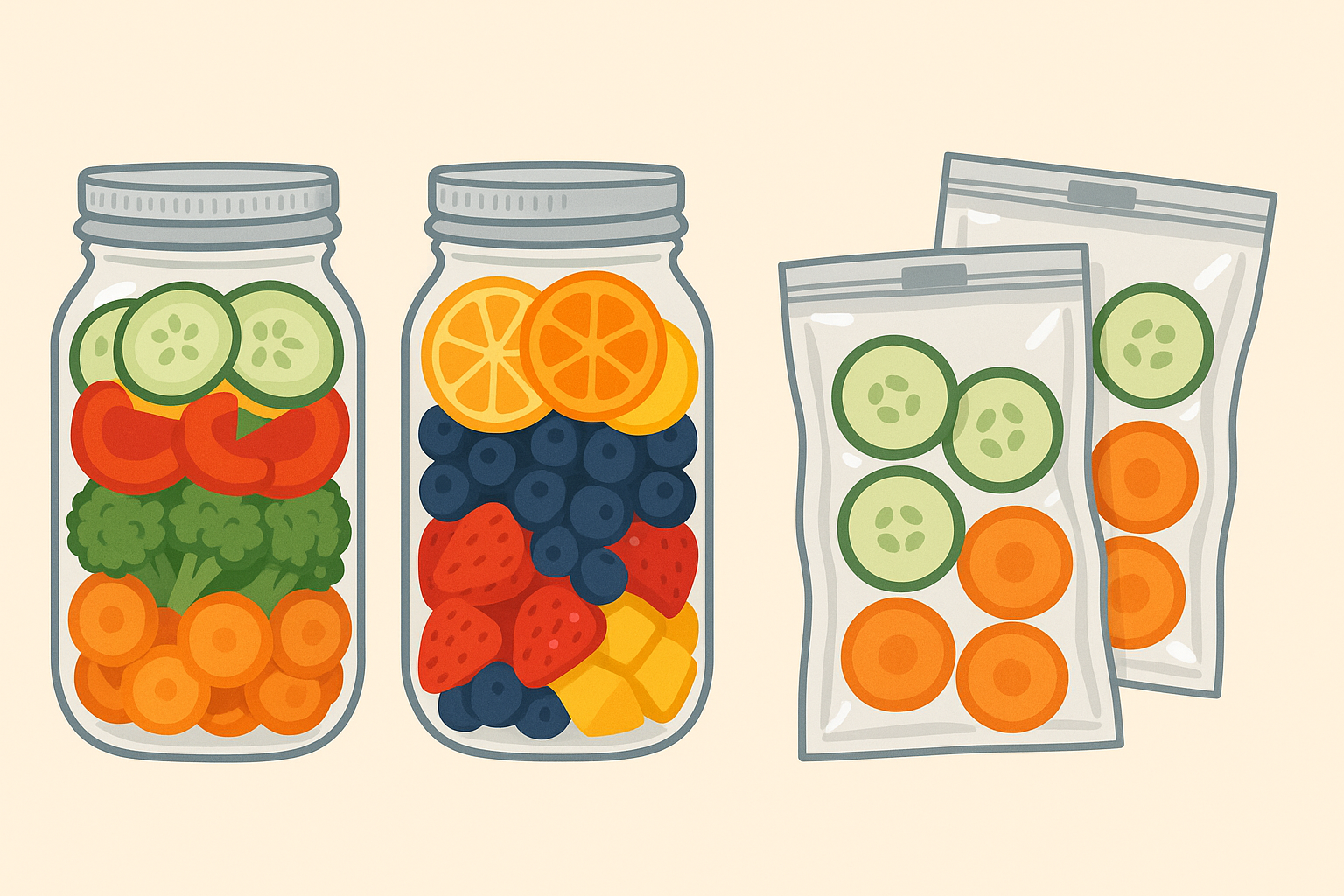
The Food Order That Actually Matters
The order you eat different raw foods dramatically affects how well your body processes them and how much nutrition you actually get. Most raw diet meal plans act like all raw foods are the same, but your digestive system definitely doesn’t think so. Understanding this sequencing has been a game-changer for my energy levels and digestion.
Raw fruits need different processing and move through your system at different speeds than vegetables and proteins. Eating them in the wrong order creates that bloated, gassy feeling that makes you wonder why you’re bothering with raw foods at all.
Why Eating Fruit First Isn’t Just About Preference
The importance of proper food sequencing aligns with drinking vinegars for gut health, as both focus on optimizing digestive timing and how your body processes food.
Eat raw fruits 30-60 minutes before other raw foods. Fruits digest quickly and can basically ferment if trapped behind slower-digesting foods. I used to end meals with fruit and couldn’t figure out why I felt bloated and gassy every afternoon.
Keep sweet fruits separate from acidic fruits by at least 2 hours. Different fruit types need different processing, and mixing them overwhelms your system’s ability to handle either effectively. My morning routine now includes sweet fruits around 8 AM and any acidic fruits around 10 AM if I want them.
Stop eating fruit 3-4 hours before bedtime. Late fruit can ferment overnight and mess with your sleep quality when your system should be resting.
Here’s what I’ve learned about timing different foods:
- Sweet fruits (like bananas): Best in the morning when your stomach is empty – they digest in about 30-45 minutes
- Acidic fruits (like oranges): Mid-morning, separate from sweet fruits – give them 45-60 minutes
- Raw veggies: Save these for when you’re actually hungry around lunch – they need 2-3 hours
- Raw proteins (nuts, seeds): Afternoon territory – your body handles these better then and they take 4-6 hours
- Fermented stuff: With meals or on empty stomach – they’re done in 1-2 hours
Making Raw Proteins Actually Work
Raw plant proteins and sprouted legumes need specific combinations that get overwhelmed when you throw everything together in a bowl. Most of us do exactly that and wonder why we feel tired instead of energized after raw meals.
Eat raw nuts and seeds with fermented vegetables. Raw sauerkraut contains stuff that helps break down the proteins and fats in nuts and seeds, making them much easier to digest. I learned this after struggling with heavy, hard-to-digest raw meals for months.
Add fresh ginger or fennel to sprouted legumes. These help your body process legume proteins without creating gas and bloating. A small piece of fresh ginger grated over my sprouted lentil salads made all the difference.
Space raw protein consumption at least 4 hours apart. Your body has limits on how much protein it can handle at once, and overwhelming it reduces absorption of everything you’re eating.
The Food Pairing Tricks That Actually Work
Certain raw food combinations can increase how much nutrition you actually absorb by up to 300%, but most raw diet meal plans completely ignore these combinations. Understanding these pairings has transformed how I plan my meals and dramatically improved my energy levels.
Fat-Soluble Vitamins Need Fat (Duh, But We Forget)
Raw vegetables containing vitamins A, D, E, and K need healthy fats to be absorbed. Without these fats, you’re essentially eating expensive fiber and missing most of the nutritional benefits you’re trying to get.
Always eat raw leafy greens with olive oil or avocado. Those nutrients in your spinach and kale need fat to be absorbed. A fat-free salad is basically a waste of good vegetables. I drizzle olive oil on everything now, and my energy levels have never been more stable.
Eat orange vegetables with raw nuts or seeds. The good stuff in carrots, sweet potatoes, and bell peppers converts to vitamin A much better when consumed with healthy fats from nuts and seeds.
Add hemp hearts or chia seeds to raw vegetable juices. Juicing removes the natural fats from vegetables, so you need to add them back for proper absorption. Your expensive green juice needs fat to actually work – I learned this after months of wondering why my green juices weren’t making me feel better.
Eating With Your Body’s Natural Clock (It’s Easier Than You Think)
Your body has natural rhythms that create optimal windows for different types of raw foods, affecting everything from how well you digest to how much energy you have. Most raw diet meal plans ignore these natural cycles completely, which is why so many people struggle with energy crashes and digestive issues.
I used to eat the same raw food combinations at any time of day and couldn’t understand why sometimes I felt amazing and other times the exact same meal left me feeling sluggish. Eating with your body’s internal clock has been one of the most powerful changes I’ve made.
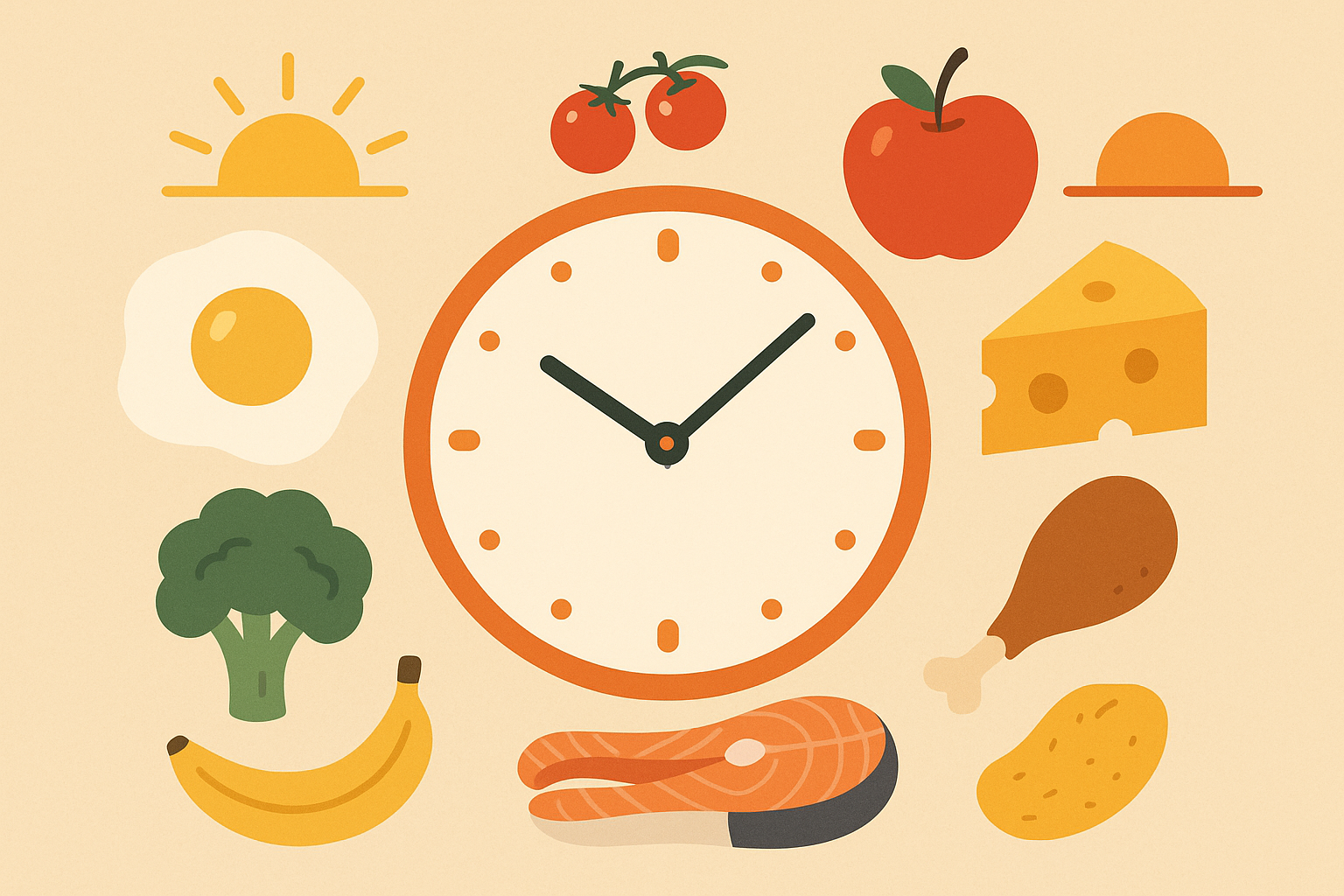
Morning Raw Food Strategies That Actually Work
Your body’s natural changes and digestive capacity create specific opportunities for raw foods in the morning. Most people jump straight into complex raw meals when their digestive system is naturally at its weakest, then wonder why they feel sluggish instead of energized.
Understanding morning digestion has completely changed how I start my days. Your digestive capacity is naturally lowest when you wake up, which means throwing a complex raw meal at your system first thing is asking too much.
How to Wake Up Your Digestive System Gently
Morning digestive preparation works well with intermittent fasting strategies for women, creating optimal conditions for raw food absorption.
Start with room temperature lemon water with raw honey 30 minutes before eating anything else. This gently wakes up your digestion and helps shift your body from overnight fasting to active digestion. Cold water shocks your system, and hot water can be too stimulating. I keep a glass bottle of room temperature water with lemon slices ready every morning.
Follow with easily digestible raw fruits. Papaya or melon contain their own digestive helpers and require minimal energy to process, making them perfect for your naturally low morning digestive capacity. These fruits essentially digest themselves while providing gentle energy to wake up your system.
Avoid raw cruciferous vegetables for the first 2 hours after waking. Kale, broccoli, and cabbage require significant digestive energy that your system simply doesn’t have first thing in the morning. Save these for later when your digestive fire is stronger. I learned this after months of forcing down morning kale smoothies that left me feeling worse than before I ate anything.
The Mid-Morning Window Most People Miss
Between 10-11 AM, your digestive capacity reaches its first daily peak, creating an optimal window for more complex raw food combinations. This is when your system can handle the raw foods that would overwhelm it earlier in the morning or later in the evening.
Schedule your most complex raw meal during this window. This is when you want to eat that elaborate raw salad with multiple vegetables, nuts, seeds, and fermented foods. Your digestive system is primed and ready.
Include raw fermented foods during this natural peak. Your body is already producing peak digestive capacity, so adding fermented foods creates a good combination that maximizes digestion and absorption. I time my daily sauerkraut consumption for this window and feel the difference immediately.
Eat harder-to-digest raw vegetables during this time. Kale or broccoli are perfect for when your digestive capacity is at its daily peak. These nutrient-dense but harder-to-digest vegetables become much more manageable when you eat them at the right time.
My friend Michael, a busy executive, struggled with afternoon energy crashes until he shifted his largest raw meal to 10:30 AM. His new routine includes a complex salad with massaged kale, sprouted sunflower seeds, fermented carrots, and avocado-tahini dressing. This timing change eliminated his 3 PM slump and improved his focus during important afternoon meetings.
Evening Raw Food Choices That Support Recovery
Evening raw food choices should support your body’s natural repair processes rather than challenging your digestive system when it’s naturally winding down. Most people eat their heaviest raw meals at dinner, then wonder why they have trouble sleeping or wake up feeling unrested.
Shifting to evening foods that support recovery has dramatically improved my sleep quality. As your digestive capacity naturally diminishes in the evening, your raw food choices should shift toward easily processed options that support recovery without taxing your system.
The Sunset Shift That Changes Everything
Focus on raw foods high in magnesium. Raw cacao or leafy greens support muscle relaxation and nervous system recovery, preparing your body for restorative sleep. Raw cacao in the evening might sound backwards, but the magnesium content actually promotes relaxation.
Include raw foods containing natural sleep supporters. Raw pumpkin seeds help your body produce the brain chemicals needed for quality sleep and overnight recovery processes. I sprinkle them on my evening salads and notice deeper, more restorative sleep.
Avoid raw foods high in natural sugars after 6 PM. Even natural fruit sugars can interfere with your body’s natural evening wind-down process and disrupt sleep quality. I learned this after wondering why eating grapes after dinner left me tossing and turning all night.
Pre-Sleep Timing That Actually Helps
Your body’s mineral absorption capacity actually increases during pre-sleep hours, creating opportunities for strategic raw food choices. Most people miss this window completely, but timing mineral-rich raw foods correctly can significantly improve recovery and sleep quality.
<p
Eat mineral-rich raw foods 2-3 hours before bed. Sea vegetables give your body time to begin processing these minerals while taking advantage of increased nighttime absorption. I add dulse flakes to my early evening meals and wake up feeling more recovered.
Include raw foods high in calcium and magnesium for sleep support. These minerals work together to support nervous system relaxation and muscle recovery during sleep.
Stop all raw food consumption 3 hours before sleep. Your digestive system needs time to process food before your body shifts into repair mode during sleep. This boundary has been crucial for improving my sleep quality on a raw diet.
Why Your Winter Raw Food Plan Should Look Nothing Like Summer
Your body’s needs shift dramatically with the seasons, which means your raw diet meal plan should adapt accordingly. Most people eat the same raw foods year-round and wonder why they feel amazing in summer but struggle with energy and warmth in winter.
Understanding seasonal changes has helped me maintain consistent energy and health throughout the year on a raw diet. Your body naturally craves different nutrients and has different digestive capacities depending on the season, and fighting against these natural rhythms makes raw eating much harder than it needs to be.
Spring: Your Body’s Natural Cleaning Season
Spring represents your body’s natural detox season, when your liver and lymphatic system are primed for cleansing. Your raw food choices during this time should support these natural processes without overwhelming them. Getting spring raw eating right sets the foundation for the entire year.
Your liver’s detox happens in two phases that need different nutrients from raw foods. Most people focus on generic “detox” foods without understanding these phases, which can actually slow down detox or create toxic buildup between phases.
Supporting Your Liver’s Two-Phase Cleaning Process
Include sulfur-rich raw vegetables daily during spring months. Radishes and onions provide support for the second phase, which neutralizes toxins that the first phase has already processed. Without adequate second phase support, you can feel worse during detox, not better. I add raw radish slices to my spring salads and notice clearer skin and better energy within days.
Add raw cruciferous vegetables to support both phases. Broccoli, kale, and cabbage contain compounds that help both phases of liver detox, making them perfect spring staples. These vegetables become more appealing to me naturally as winter ends.
Include raw herbs in your daily meals. Dandelion and milk thistle specifically support liver function and can be easily added to salads, smoothies, or eaten as teas. I forage for dandelion greens in early spring and feel my body responding positively to their bitter compounds.
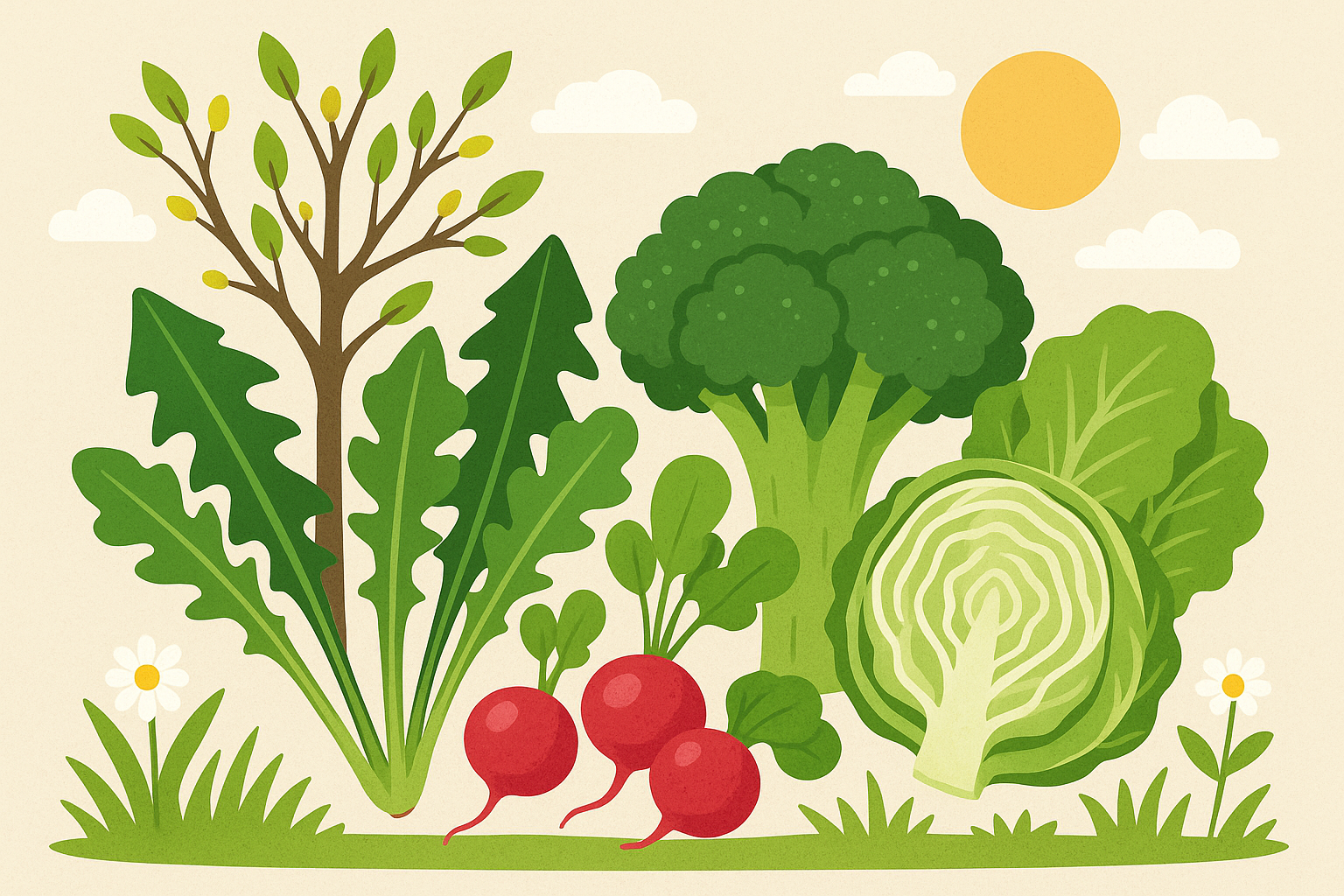
Summer: Staying Cool and Hydrated Beyond Just Water
Summer’s heat requires raw food choices that provide internal cooling while maintaining electrolyte balance. Most people think hydration just means drinking more water, but your raw diet meal plan can provide superior cooling and electrolyte replacement when planned correctly.
Electrolyte Balance Through Smart Raw Food Choices
Raw foods can provide better electrolyte replacement compared to processed sports drinks, but you need specific combinations to maintain proper mineral balance during hot weather. Getting this balance wrong can leave you feeling drained despite eating plenty of raw foods.
Include high-potassium raw foods daily. Coconut water and leafy greens provide potassium in the most usable form along with supporting nutrients. Potassium is what you lose most through sweat, and I’ve found that drinking fresh coconut water in the morning prevents the afternoon fatigue I used to experience during hot summer days.
Balance sodium through raw celery and sea vegetables. These provide natural sodium along with other minerals that help your body retain and use the sodium effectively, unlike processed salt. I add celery juice to my summer routine and notice improved hydration throughout the day.
Maintain magnesium levels with raw nuts and seeds throughout the day. Magnesium deficiency is common in summer due to increased losses through sweat. Raw nuts and seeds provide magnesium along with healthy fats that support absorption. I keep soaked almonds in my refrigerator during summer months for easy snacking.
Winter: Staying Warm and Energized on Raw Foods
Winter raw food meal planning requires understanding how to maintain warmth and energy when your body naturally craves warming foods. Most raw dieters struggle during winter because they don’t adapt their food choices to support their body’s increased energy needs during cold months.
Raw Food Combinations That Generate Internal Heat
Certain raw foods naturally increase internal heat production through their effects on your body, allowing you to maintain warmth without abandoning your raw diet. Understanding these warming effects has been crucial for maintaining my raw diet through cold winters.
Include warming spices in daily meals. Raw ginger and cayenne increase circulation and internal heat production, helping maintain body temperature from the inside out. I grate fresh ginger into my winter salad dressings and feel warmth spreading through my body within minutes.
Focus on raw foods high in healthy fats for sustained energy. Fats provide more than twice the energy per gram compared to carbohydrates and help maintain steady energy levels during cold weather when your body needs more fuel. Winter is when I increase my consumption of raw nuts, seeds, and avocados significantly.
Use room temperature or slightly warmed raw foods instead of cold preparations. You can warm raw foods to about 115°F without destroying the good stuff, making winter raw eating much more comfortable and appealing. I warm my raw soups gently and find them much more satisfying during cold months.
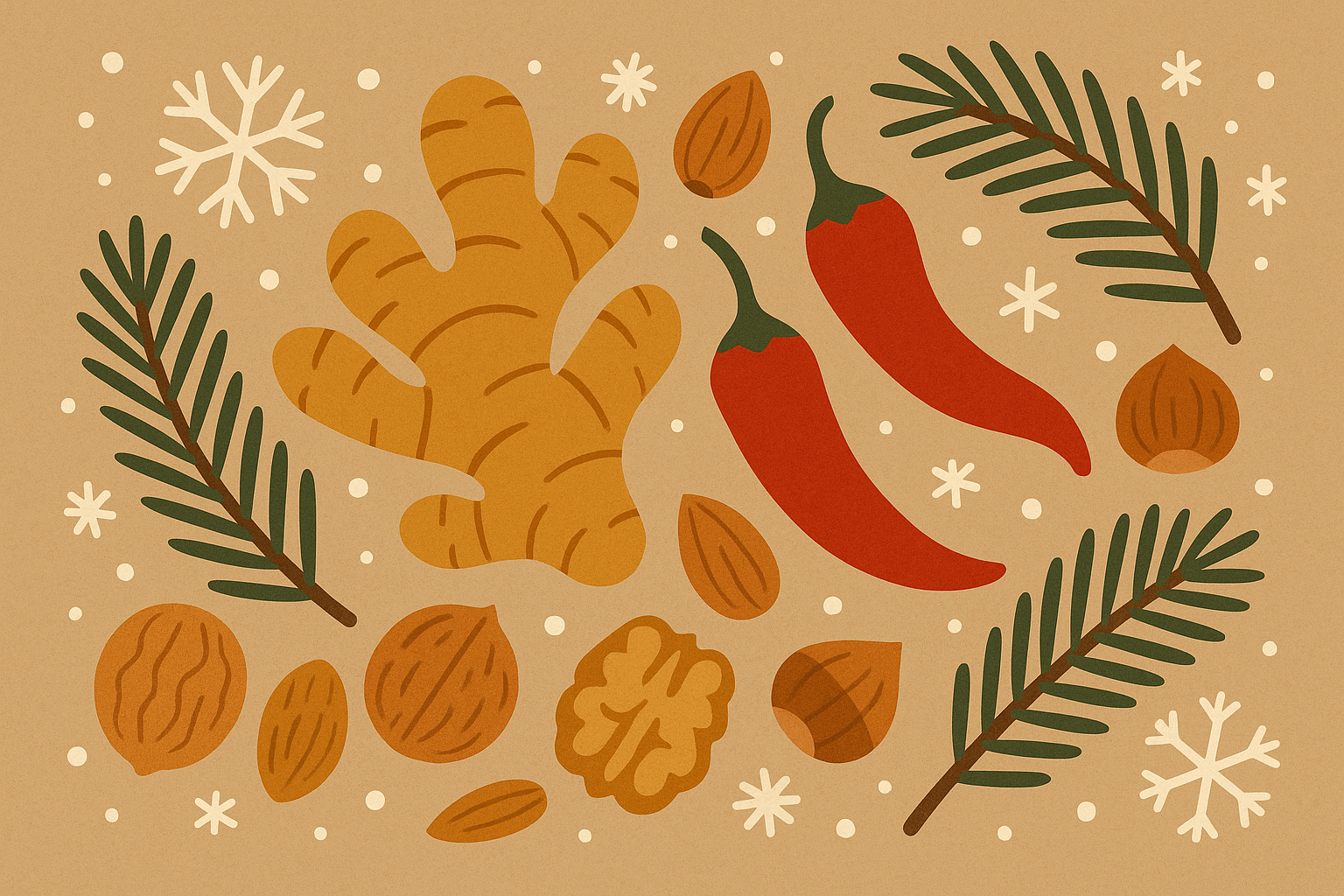
Keeping Your Gut Happy Through Smart Raw Food Choices
Your gut bacteria need specific raw fiber types and fermented food timing to thrive, not random probiotic supplements. Most raw diet meal plans treat gut health as an afterthought, but cultivating beneficial bacteria through strategic raw food choices should be the foundation of your entire approach.
Understanding how to keep my gut happy has transformed my digestion, energy, mood, and overall health. Your gut bacteria are essentially a second brain, and feeding them correctly through raw food choices affects every aspect of your wellbeing.
The Fiber Strategy That Builds Good Bacteria
Different types of raw fiber feed different bacterial strains, so you need a systematic approach to raw food selection that promotes optimal gut diversity. Most people eat the same raw vegetables every day and wonder why their gut health plateaus.
Rotating fiber sources has been key to maintaining a thriving gut. I noticed significant improvements in my digestion and energy when I started varying my raw vegetable choices throughout the week instead of eating the same salad every day.
Adding Resistant Starch Without the Gas
Raw foods containing resistant starch provide unique gut benefits, but you need to introduce them gradually and combine them correctly to avoid digestive distress while maximizing bacterial benefits. I learned this through some uncomfortable trial and error early in my raw food journey.
The gradual introduction of resistant starches aligns perfectly with why dietary fiber is the real macronutrient to focus on for optimal health outcomes.
Start with small amounts of raw green bananas or plantains. These provide resistant starch that feeds beneficial bacteria, but too much too fast can cause gas and bloating. Begin with just a few slices and gradually increase based on your tolerance. I started with one thin slice of green banana in my morning smoothie and worked up to half a banana over several weeks.
Gradually increase raw potato starch through uncooked potatoes. Raw potatoes contain resistant starch that’s particularly beneficial for certain bacterial strains, but they need to be introduced slowly to avoid digestive upset. I grate small amounts of raw potato into my salads, starting with just a teaspoon.
Pay attention to how you feel and adjust accordingly. Your gut bacteria population is unique, so what works for others might not work for you immediately. I keep a simple food journal to track which resistant starches work best for my system.
Simple Fiber Rotation That Works
Create weekly rotation schedules for different raw fiber sources. Monday might be cruciferous vegetables, Tuesday root vegetables, Wednesday leafy greens, and so on. This ensures you’re feeding different bacterial populations throughout the week. I plan my weekly shopping around this rotation system.
Track how different raw fiber sources make you feel. Keep a simple food and symptom journal to identify which raw fiber sources make you feel best and which combinations work well together. This has helped me identify that I feel best when I combine leafy greens with fermented vegetables.
Adjust fiber types based on seasonal availability and how you feel. Your gut bacteria needs change with the seasons, stress levels, and life circumstances, so your fiber rotation should adapt accordingly. I eat more warming root vegetables in winter and cooling leafy greens in summer.
Here’s my simple fiber rotation approach:
- Soluble fiber (apples, chia seeds): 3-4 times per week – soak seeds, eat fresh fruit
- Insoluble fiber (kale, broccoli, carrots): Daily – chop 15-30 minutes before eating
- Resistant starch (green bananas, raw potatoes): 2-3 times per week – start small, increase gradually
- Prebiotic fiber (garlic, onions, asparagus): 4-5 times per week – fresh preparation only
- Fermentable fiber (Jerusalem artichoke, leeks): 2-3 times per week – fresh preparation only
Making Fermented Raw Foods Work
Raw fermented foods provide direct bacterial support while supplying the nutrients needed to help them establish in your gut. Most people treat fermented foods as condiments rather than strategic gut health tools, missing opportunities to dramatically improve their gut diversity and function.
Timing Fermented Foods Right
The timing of raw fermented food consumption relative to other raw foods dramatically affects bacterial survival and success. Getting this timing wrong means you’re essentially wasting the beneficial bacteria in your expensive fermented foods.
Eat raw fermented foods on an empty stomach when possible. Stomach acid is lower when you haven’t eaten recently, giving beneficial bacteria a better chance of surviving the journey to your intestines. I eat my daily portion of sauerkraut first thing in the morning before anything else.
Follow fermented foods with prebiotic raw vegetables within 30 minutes. This provides immediate food for the beneficial bacteria you just consumed, helping them establish and multiply in your gut. I always eat my sauerkraut with a small salad containing Jerusalem artichoke or dandelion greens.
Avoid combining raw fermented foods with antimicrobial raw foods. While garlic has health benefits, its antimicrobial properties can kill the beneficial bacteria in fermented foods when consumed together. I separate my garlic consumption from my fermented food consumption by at least two hours.
My friend Lisa, a nutritionist from California, optimized her gut health by eating 2 tablespoons of raw sauerkraut on an empty stomach each morning, followed 30 minutes later by a salad containing Jerusalem artichoke and dandelion greens. Within six weeks, her digestive issues resolved and her energy levels stabilized throughout the day.
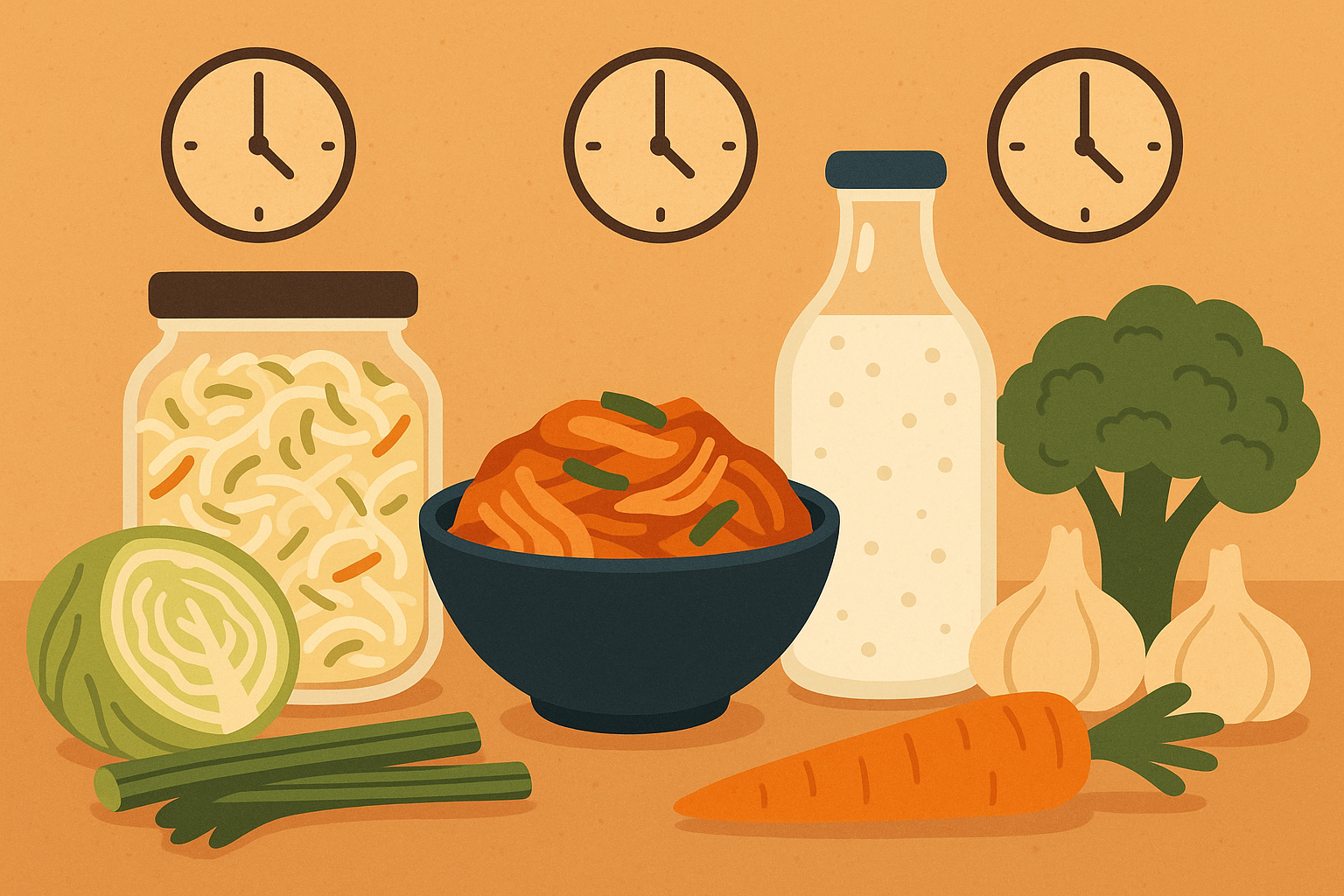
Raw Vegan vs. Raw Vegetarian: The Differences Nobody Talks About
The difference between raw vegan and raw vegetarian approaches goes far beyond dairy inclusion – it fundamentally changes nutrient timing, bacterial patterns, and metabolic flexibility in ways that require completely different meal planning strategies. Most people don’t realize these distinctions exist, but understanding them is crucial for success on either path.
Raw Dairy Integration for Vegetarians
Raw dairy products create unique opportunities for beneficial bacteria and bacterial diversity that raw vegans must replicate through alternative methods. Understanding how to properly integrate raw dairy has been transformative for raw vegetarians I know, but it requires specific knowledge most people lack.
Raw Kefir and Gut Health Development
Raw dairy kefir provides bacterial strains and growth factors unavailable in plant-based alternatives, creating accelerated gut healing opportunities when properly integrated into meal planning. However, raw dairy isn’t suitable for everyone and requires careful sourcing and introduction.
Source raw dairy from grass-fed, pasture-raised animals only. The quality of raw dairy depends entirely on the health of the animals and their living conditions. Poor quality raw dairy can cause more harm than benefit. I know raw vegetarians who drive hours to get properly sourced raw dairy because the difference is so significant.
Introduce raw kefir gradually, starting with 1-2 tablespoons daily. Even high-quality raw dairy can cause digestive upset if introduced too quickly, especially if you haven’t consumed dairy in a while. Work up slowly over several weeks to allow your digestive system to adapt.
Combine with raw prebiotic vegetables to support bacterial establishment. The bacteria in raw kefir need food to establish themselves in your gut, so pairing with prebiotic vegetables maximizes their effectiveness. I recommend eating raw kefir with finely chopped Jerusalem artichoke or dandelion greens.
Pay attention to how you feel and adjust timing accordingly. Some people do better with raw dairy in the morning, others in the evening. Energy levels, skin clarity, and digestive comfort are good indicators of how well you’re tolerating raw dairy.
Raw Vegan Nutritional Completeness Systems
Raw vegan meal planning requires sophisticated understanding of nutrient interactions and anti-nutrient management to achieve nutritional completeness without animal products. This goes far beyond simple B12 supplementation and requires strategic planning that most raw vegans don’t realize they need.
B12 and Folate: The Hidden Problem
Raw vegan diets can mask B12 deficiency through high folate intake from raw leafy greens, creating a dangerous situation where deficiency symptoms don’t appear until serious damage has occurred. Understanding this interaction is crucial for long-term raw vegan success.
B12 monitoring becomes even more critical when following intuitive eating principles on a raw vegan diet, as natural hunger cues may not signal nutrient deficiencies.
Test methylmalonic acid levels every 6 months, not just B12. Standard B12 tests can show normal levels even when you’re functionally deficient due to high folate intake masking the deficiency. I learned this from a raw vegan friend who had normal B12 levels but was experiencing neurological symptoms from functional deficiency.
Vary your high-folate raw greens to prevent B12 masking. While leafy greens are incredibly healthy, eating massive amounts daily can interfere with B12 status assessment and potentially mask deficiency symptoms. I vary my greens intake and include lower-folate vegetables regularly.
Include raw fermented foods that may contain B12-producing bacteria. Some fermented vegetables contain bacteria that produce B12, though this shouldn’t be relied upon as your primary source. Raw sauerkraut and kimchi can provide some B12, but supplementation is still necessary.
Consider raw spirulina and nutritional yeast as supplemental sources. These provide some B12 along with other nutrients, but shouldn’t replace proper testing and supplementation when needed. I use these as part of a comprehensive approach to B12 adequacy.
Iron and Zinc: Making Plant Sources Work
Raw vegan diets require strategic pairing of iron and zinc sources with absorption enhancers while avoiding inhibitors, creating complex meal timing requirements that most people find overwhelming until they understand the system.
Pair raw iron sources with vitamin C-rich
Pair raw iron sources with vitamin C-rich foods at every meal. Plant-based iron is less easily absorbed than iron from animal sources, but vitamin C dramatically improves absorption when consumed together. I squeeze lemon juice on my iron-rich raw vegetables and notice better energy levels.
Separate raw calcium-rich foods from iron sources by 2+ hours. Calcium competes with iron for absorption, so timing these nutrients separately maximizes absorption of both. I eat my calcium-rich raw vegetables in the morning and iron-rich foods in the afternoon.
Include raw sprouted legumes for enhanced mineral availability. Sprouting reduces anti-nutrients that interfere with mineral absorption while increasing the minerals themselves. Sprouted lentils and mung beans have become staples in my raw vegan meal rotation.
Soak raw nuts and seeds to reduce interference with mineral absorption. Soaking significantly reduces compounds that bind to minerals and prevent absorption. I soak all my nuts and seeds overnight and notice much better digestion and energy.
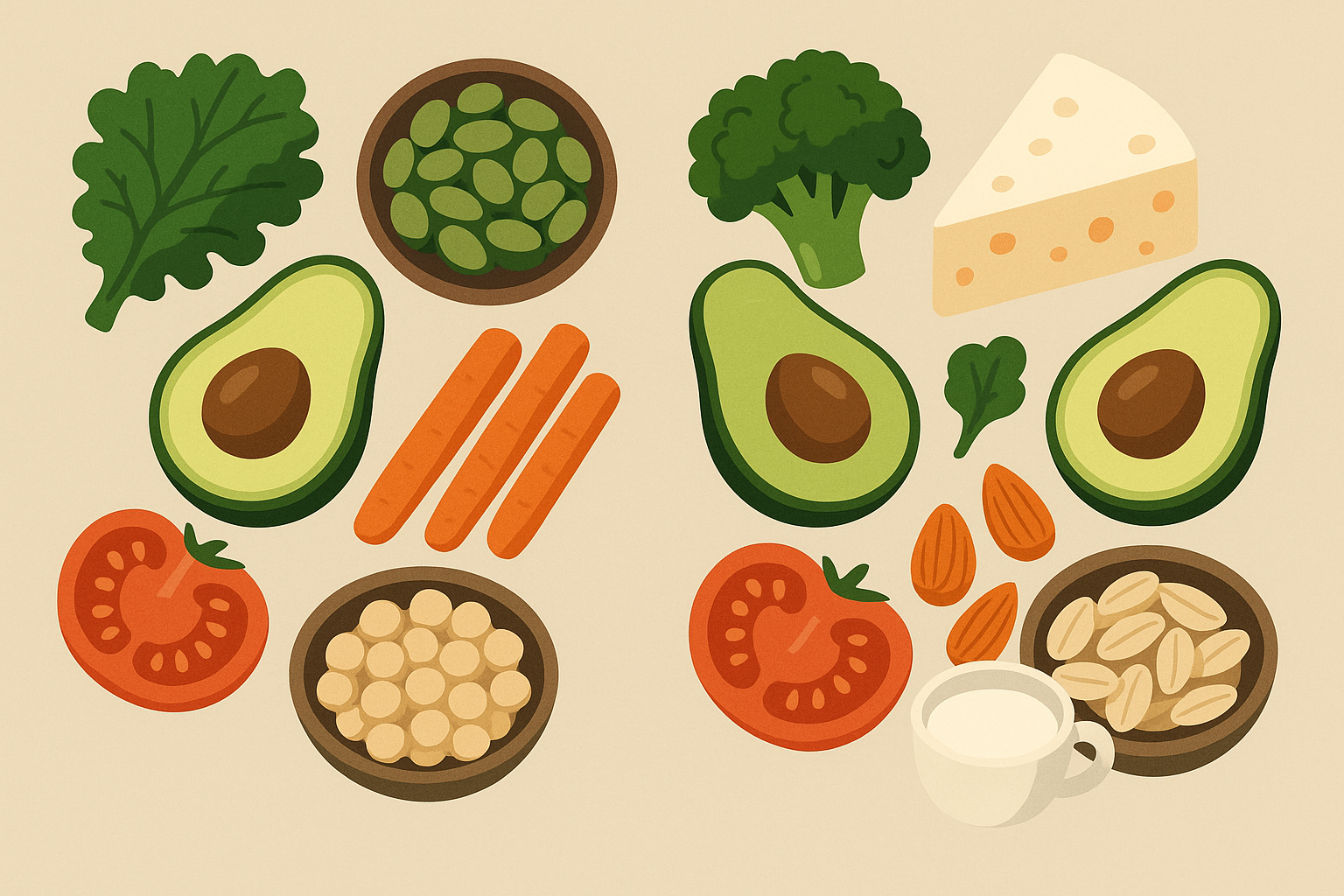
Research from Tua Saude’s comprehensive raw food analysis indicates that raw foods are heated to a maximum temperature of 48ºC or 118.4ºF to preserve enzymes, a critical distinction that affects meal planning for both raw vegans and vegetarians.
How does your current raw diet meal plan account for these timing and pairing strategies? Most people are missing huge opportunities for better nutrition and energy by ignoring these details.
According to Listonic’s meal planning research, joining more than 10M users in structured meal planning approaches helps maintain consistency and nutritional adequacy in raw food diets, particularly important for complex raw vegan protocols.
The complexity of raw vegan nutrition planning makes understanding which supplements to take daily even more crucial for long-term success.
I know not everyone has time to soak nuts overnight or shop for fresh veggies daily. Do what you can – even small changes help. The goal isn’t perfection; it’s progress.
Organic Authority understands that transitioning to an optimized raw diet meal plan can feel overwhelming with all these timing considerations and nutrient interactions. That’s why we’ve carefully curated high-quality supplements and superfoods that can fill nutritional gaps while you’re perfecting your raw food timing and combinations. Our vetted selection of organic, bioavailable nutrients can support your raw diet journey without compromising your commitment to clean, whole foods.
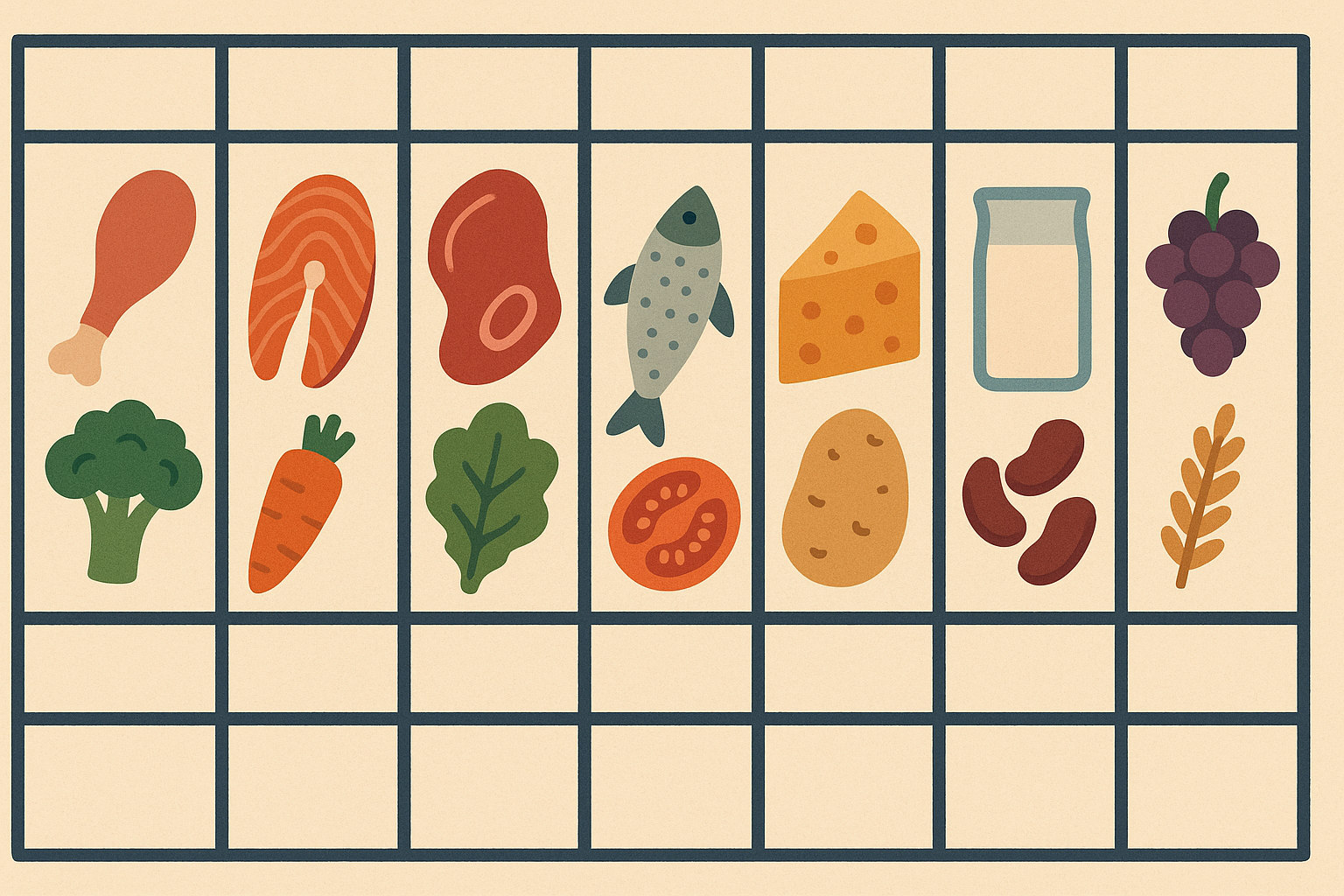
Final Thoughts
Your raw diet meal plan success isn’t about perfection – it’s about understanding the basic principles that make raw foods work better in your body. I’ve shared these timing strategies, natural rhythm integration, seasonal adaptations, and gut health techniques because they’ve transformed not just my own health, but the health of countless others who were struggling with raw food approaches that ignored these fundamental realities.
Look, I still mess this up regularly. Yesterday I ate cold leftover salad straight from the fridge and wondered why I felt blah afterward. This stuff takes practice, and that’s okay.
The difference between a raw diet that leaves you feeling energized and vibrant versus one that leaves you cold, tired, and nutritionally deficient often comes down to these timing and combination details that most people never learn. You don’t need to implement everything at once – start with the timing strategies that sound most doable for your current situation, then gradually add the seasonal and gut health approaches as they become second nature.
Remember that sustainable changes take time, much like the principles discussed in how to activate autophagy in your cells – consistency and patience yield the best long-term results.
Your body’s needs are unique, and what works perfectly for someone else might need adjustment for your individual circumstances, stress levels, and health history. The key is understanding these principles well enough to adapt them to your life rather than rigidly following someone else’s meal plan. Your raw diet meal plan should evolve with you, supporting your health goals while fitting realistically into your daily routine.
Some days I mess this up completely and eat fruit after dinner. The world doesn’t end. This is about progress, not perfection.
Whether you’re eating raw foods as a complete lifestyle or incorporating more raw foods into your existing routine, these timing principles will amplify the benefits you receive. Raw diets require more attention to detail than conventional eating approaches, but the rewards in terms of energy, digestion, and overall vitality make the effort worthwhile.
I’m not sure why warming raw soup to 115°F makes such a difference, but it does. Maybe it’s the temperature, maybe it’s just that I’m paying attention. Either way, it works.
Start with one thing that sounds doable and go from there. Maybe it’s just chopping your vegetables 20 minutes before eating instead of hours ahead. Maybe it’s pulling your fermented foods out of the fridge before you start cooking. Small changes add up to big differences over time.
